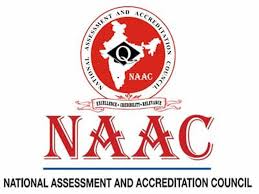National Assessment And Accreditation Council:

The National Assessment and Accreditation Council (NAAC) has decided to introduce a binary categorisation of “accredited” or “not accredited” for higher educational institutions.
- National Assessment and Accreditation Council (NAAC) is an autonomous body of the University Grants Commission (UGC), under the Ministry of Education.
- It was established in 1994 in pursuance of the recommendations made by the National Policy of Education, 1986. It’s headquarter is in Bengaluru.
- Function is evaluation, assessment, and accreditation of Higher Education Institutions (HEIs) in the country.
- Assessment is a performance evaluation of an institution and its units and is accomplished through a process based on self-study and peer review using defined criteria.
- Accreditation refers to the certification given by NAAC, which is valid for a period of five years.
- The ratings of institutions range from A++ to C. If an institution is graded D, it means it is not accredited.
- HEIs with a record of at least two batches of students graduated or been in existence for six years, whichever is earlier, are eligible to apply for the process of Assessment and Accreditation (A&A) of NAAC and fulfill all the specified conditions.
- At present, the Assessment and Accreditation by NAAC is done on a voluntary basis.
- NAAC has identified seven criteria: i. Curricular aspects, ii. Teaching-learning and evaluation, iii. Research, Consultancy and extension, iv. Infrastructure and learning resources, v. Student support and progression, vi. Governance and leadership and vii. Innovative practices as the basis for its assessment procedure.
- It functions through its General Council (GC) and Executive Committee (EC), comprising educational administrators, policymakers and senior academicians from a cross-section of the Indian higher education system.
- The Chairperson of the UGC is the President of the GC of the NAAC




